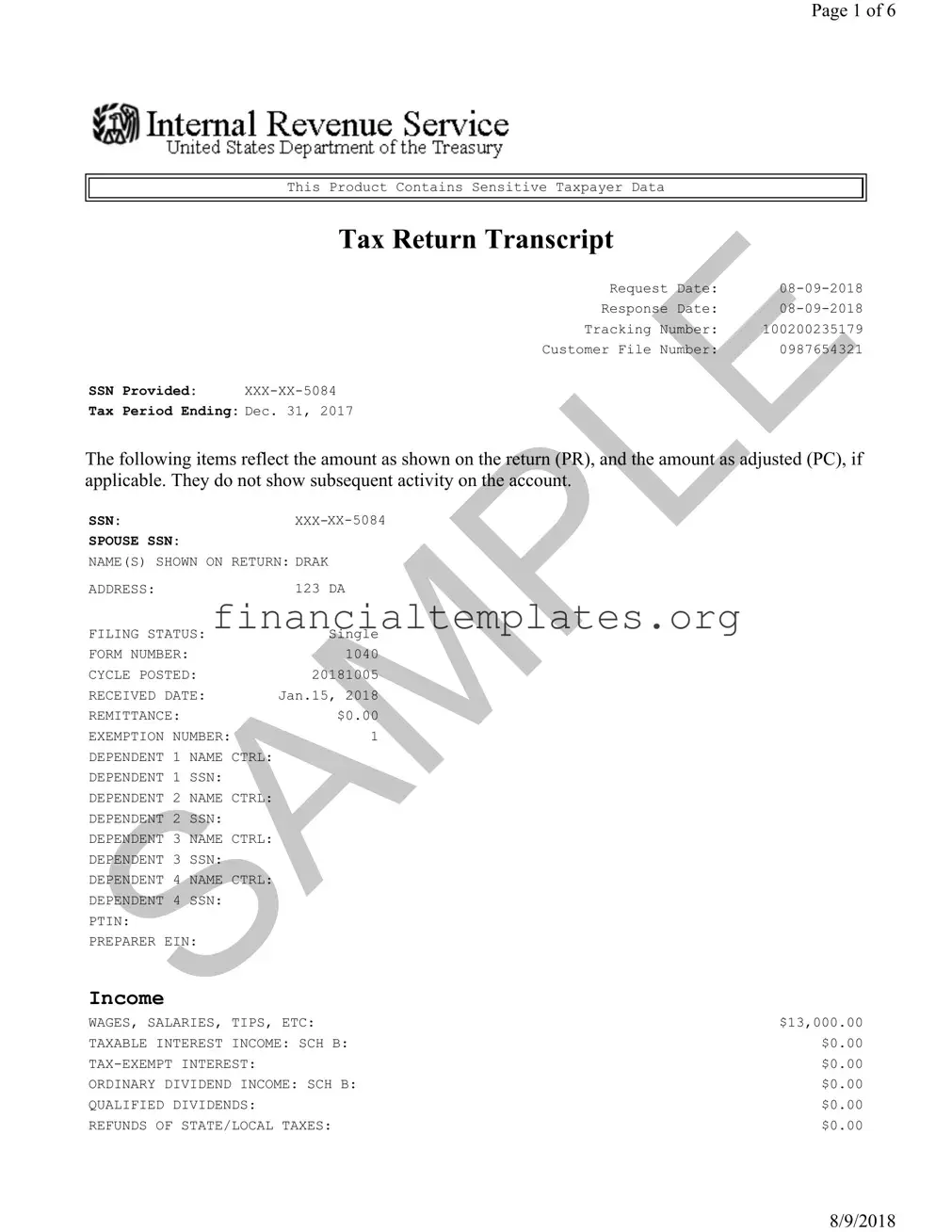The Form 1040, U.S. Individual Income Tax Return, is a document closely resembling the sample Tax Return Transcript in its content and purpose. Both provide detailed information about an individual's income, deductions, and tax liability for a specific tax year. However, the Form 1040 is the original filing document, whereas the transcript is a summary provided by the IRS upon request, noting amounts as shown on the return and as adjusted.
W-2 forms, issued by employers, report an employee's annual wages and the amount of taxes withheld from their paycheck. These forms are akin to the information found in the Tax Return Transcript, which includes income data such as wages, salaries, and tips. Both documents are essential for understanding an individual's income situation and are used in preparing or verifying tax return details.
Schedule C (Profit or Loss From Business) is part of an individual's tax return that outlines the income and expenses of a sole proprietorship. Like the Tax Return Transcript, Schedule C provides a detailed record of business operations affecting the taxpayer's overall tax situation. Both documents are crucial for accurate reporting and understanding of taxable business income or loss.
Form 1099, particularly the 1099-MISC, reports income from sources other than wages, salaries, and tips. It's similar to the Tax Return Transcript in that both contain information about an individual's income. However, while 1099 forms are issued by payers to the taxpayer and the IRS, the transcript is a consolidated summary provided by the IRS, capturing various income sources, including those reported on different 1099 forms.
The Schedule D (Capital Gains and Losses) form and the Tax Return Transcript both provide information on an individual's investment income, including capital gains or losses from the sale of assets. Schedule D details transactions that contribute to the capital gains or losses, while the transcript summarizes the outcome as it affects the individual's tax liability.
Form 8962 (Premium Tax Credit) is used to reconcile the amount of health insurance premium credits received with the amount one is eligible for. Like the Tax Return Transcript, it concerns adjustments that affect the taxpayer's final tax calculation. Both documents may include adjustments to income or tax credits that impact the overall tax situation.
The Schedule EIC (Earned Income Credit) shows eligibility for a tax credit aimed at low- to moderate-income families, similar to the transcript's function of detailing various tax credits the taxpayer has claimed. The Tax Return Transcript consolidates this information, showing the outcome of such claims including the Earned Income Credit.
Lastly, the Schedule SE (Self-Employment Tax) complements the Tax Return Transcript by providing details on self-employment taxes owed by those who work for themselves. Both documents are interconnected, with Schedule SE addressing how self-employment income and taxes contribute to the overall tax scenario detailed in the transcript.

